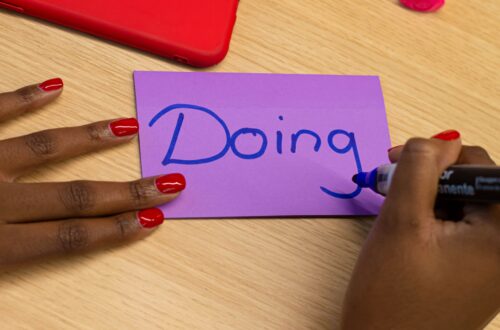Why Mornings Are Crucial for Anxiety Control
Ever felt that wave of tension hit you the moment you wake up? You’re not alone. Morning anxiety is a real thing, and it sets the tone for the rest of your day. Our cortisol levels (the stress hormone) naturally spike in the morning, which means our body is already in a bit of fight-or-flight mode.
That’s why the early hours are the perfect time to reset your nervous system with simple, effective breathing exercises. Just a few minutes can make a huge difference.
Understanding the Science Behind Breathing and Anxiety
Breathing isn’t just something we do to survive—it’s a tool. A well-timed inhale and exhale can signal the brain to calm down. Here’s the magic: slow, deep breathing activates your parasympathetic nervous system. That’s the part responsible for “rest and digest,” the opposite of “fight or flight.”
When you’re anxious, your breathing is likely shallow and rapid. Breathing deeply reverses that, slowing your heart rate and calming your mind.
How to Prepare Your Mind and Body for Morning Breathing
Before you jump in, make sure you’re in the right mindset. You don’t need anything fancy—just a quiet space and a few minutes of undivided attention.
- Sit or lie down comfortably. Keep your spine straight to allow full lung expansion.
- Close your eyes to limit distractions.
- Focus on your breath—feel it enter and leave your body.
Got a cozy corner or a yoga mat? Even better.
Technique #1: Box Breathing (Four-Square Breathing)
What is Box Breathing?
Box breathing, made famous by Navy SEALs, is a super simple yet powerful technique to regain control of your body and mind. It’s called “box” because all four parts of the breath are the same length.
How to Do It
- Inhale for 4 seconds.
- Hold your breath for 4 seconds.
- Exhale for 4 seconds.
- Hold your breath again for 4 seconds.
Repeat 4–5 times.
Benefits of Box Breathing
- Reduces cortisol levels
- Improves focus and concentration
- Helps you gain control over your emotions
It’s perfect before a big meeting or even just to shake off morning fog.
Technique #2: 4-7-8 Breathing
The Origins of 4-7-8
Popularized by Dr. Andrew Weil, this breathing method is rooted in yogic practices and tailored for quick relaxation and anxiety relief.
Step-by-Step Guide
- Inhale quietly through the nose for 4 seconds
- Hold your breath for 7 seconds
- Exhale completely through your mouth for 8 seconds
Do this for 4 cycles.
Why It Works for Anxiety
The extended exhale tells your brain it’s safe. It’s especially effective when your mind is racing with what-ifs and to-do lists before breakfast.
Technique #3: Diaphragmatic Breathing (Belly Breathing)
Difference Between Chest and Belly Breathing
Most of us chest-breathe, especially under stress. Diaphragmatic breathing uses your diaphragm, letting your belly rise and fall, not your chest.
How to Practice Diaphragmatic Breathing
- Place one hand on your chest and the other on your stomach.
- Inhale deeply through your nose—only your belly should move.
- Exhale slowly through pursed lips.
Practice for 5 minutes each morning.
Physical and Mental Benefits
- Reduces heart rate
- Improves oxygen flow
- Promotes relaxation and clear thinking
Technique #4: Alternate Nostril Breathing (Nadi Shodhana)
Ancient Roots in Yoga
This breathing technique is a centuries-old yogic method that balances energy and calms the mind. It’s said to harmonize the left and right sides of the brain.
Simple Instructions for Beginners
- Use your thumb to close your right nostril. Inhale through the left.
- Close your left nostril with your ring finger. Exhale through the right.
- Inhale through the right, close it, then exhale through the left.
That’s one round. Repeat 5–10 times.
How It Rebalances Your Nervous System
This rhythmic breathing improves mental clarity and reduces anxiety, making it a beautiful way to start your day centered and balanced.
Technique #5: Morning Breath of Fire
What Is It and Why It’s Powerful
Breath of Fire is an energizing technique used in Kundalini yoga. Unlike the others, it heats you up, so it’s not just calming—it’s activating.
Safety Tips and Best Practices
- Sit cross-legged.
- Begin rapid, equal inhales and exhales through the nose.
- Focus on pumping the belly.
Do it for 30 seconds to start, then gradually increase.
When to Use It (And When Not To)
It’s great if you wake up sluggish or anxious, but skip this one if you’re feeling dizzy, pregnant, or have high blood pressure.
Integrating Breathing Techniques Into Your Morning Routine
Quick Rituals for Busy Mornings
You don’t need an hour to breathe right. Try this:
- Wake up, sit up, breathe for 5 minutes.
- Add a quick stretch or yoga pose.
- Sip some water and get into your day, grounded and refreshed.
Combining Breathwork with Meditation and Stretching
Breathwork pairs beautifully with:
What to Avoid While Doing Morning Breathing
- Don’t rush the process—give it time.
- Avoid doing it while multitasking. No breathing while scrolling Instagram.
- Don’t force your breath—it should feel natural and safe.
Final Tips for Getting the Most Out of Breathing Exercises
- Be consistent. The more you do it, the easier it gets.
- Set a reminder or attach it to an existing habit (like brushing your teeth).
- Experiment with different techniques and find what feels best for you.
Conclusion
Breathing is the anchor to your peace. When anxiety hits first thing in the morning, you don’t need to suffer through it. These five breathing techniques are free, effective, and completely within your control. They’re not just coping tools—they’re life tools.
So tomorrow morning, instead of reaching for your phone… reach inward. Breathe. And begin again.
FAQs
1. Can I do these breathing techniques if I have asthma?
Yes, but always consult your doctor first. Stick to gentle methods like diaphragmatic breathing.
2. How long before I feel results?
Many people feel calmer after just one session. Consistency over days and weeks brings long-term benefits.
3. Should I do these before or after breakfast?
Preferably before eating, as deep breathing on a full stomach can be uncomfortable.
4. Can I combine multiple techniques?
Absolutely! Try Box Breathing on Mondays, 4-7-8 on Tuesdays, and so on. Mix and match what feels best.
5. Are there apps to guide me?
Yes! Try Breethe, Insight Timer, or even YouTube videos for guided sessions.





